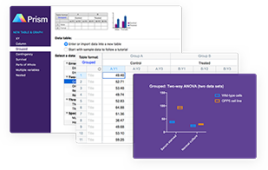Rensselaer-led Astrobiology Group Among First
Granted Access to New Flying Observatory

This graphical representation from the |
A team of astrobiology researchers — including two from
Rensselaer Polytechnic Institute — will use a series of
nighttime flights on an airborne observatory to search newly
born stars for the presence of precursors to life.
The scientists, led by Douglas Whittet, director of the New York Center for
Astrobiology at Rensselaer, will use the observatory’s
infrared absorption spectroscopy capabilities to search for a
suite of molecules in clouds of dust surrounding five young
stars. Their work is part of the first season, or cycle, of
research to be performed aboard the Statospheric
Observatory for Infrared Astronomy (SOFIA), the largest
airborne observatory in the world.
A partnership of NASA and the German Aerospace Center, SOFIA
consists of an extensively modified Boeing 747SP aircraft
carrying a reflecting telescope with an effective diameter of
2.5 meters (100 inches). The airborne observatory, based at
NASA’s Dryden Aircraft Operations Facility in California, began
a planned-20 year lifetime with its first cycle from November
2012 to December 2013.
“We’re interested in how the matter that you need to make
planetary life came to be: Where did it come from and how was
it formed? And since it happened here in our solar system, is
it likely to happen elsewhere as well?” said Whittet, also a
professor of physics. “We can’t go back in time to observe our
solar system when it was born, but we can look at other regions
that we believe are similar and use them as analogs for the
early solar system.”
The scientists will determine the chemical composition of
distant regions through absorption spectrometry, a technique
that takes advantage of the fact that different types of matter
absorb different segments of the wavelength spectrum generated
by a given source of energy – in this case, the newly born
star.
Whittet explained that the infrared spectra of newly born
stars are rich in absorption features that signal the presence
of organic molecules and water in the dusty remnants of the
clouds from which they formed. These dusty remnants are the raw
materials from which new planets may coalesce.
Aboard SOFIA, the scientists will be looking at the
absorption spectrum of infrared light at wavelengths between 5
and 8 microns. The researchers will search for molecules such
as methane, ammonia, formaldehyde, methanol, and formic acid —
early precursors of amino acids. The work is a collaboration
between Whittet and Charles Poteet, a post-doctoral research
associate at Rensselaer, and researchers at SETI, the
California Institute of Technology, Ithaca College, the NASA
Ames Research Center, and Johns Hopkins University.
The current project builds upon
recent work in which the scientists combined years of
existing research to locate areas in outer space that have
extreme potential for complex organic molecule formation.
Whittet and his collaborators searched for indications of
methanol, a key ingredient in the synthesis of organic
molecules that could lead to life, and identified a handful of
newly formed stars that are surrounded by clouds with a high
concentration of methanol (about 30 percent).
For that project, the scientists were able to rely on
observations made from ground-based telescopes, but Whittet
said only SOFIA has the capability to gather the more specific
data they currently seek.
“We’re trying to look at a part of the spectrum that doesn’t
get through the atmosphere very well,” Whittet said. “Earth’s
atmosphere, which contains a lot of moisture, absorbs most of
the infrared radiation we want to detect. But SOFIA cruises at
an altitude of about 40,000 feet, which is above almost all of
the moisture, and allows us an unimpeded view of the
stars.”
Further, said Whittet, although two space-based instruments
equipped with infrared absorption spectrometry capabilities
– NASA’s Spitzer Space Telescope, and the Infrared Space
Observatory, a European Space Agency satellite – did take
observations in that region, neither of them had the
appropriate combination of resolution and sensitivity for
the group’s current work.
“There’s really nothing else out there right now that could
collect the data we need for this research,” Whittet said.
The scientists were awarded 6.5 hours aboard SOFIA, time
which may be used in one or several flights over the Pacific
Ocean, and Whittet hopes he will be aboard for the
observations. He said the scientists will likely publish
findings from their research within a year after collecting the
data.
The New York Center for Astrobiology
Based within the School of
Science at Rensselaer Polytechnic Institute in Troy, N.Y.,
the New York Center for Astrobiology is devoted to
investigating the origins of life on Earth and the conditions
that lead to formation of habitable planets in our own and
other solar systems. Supported by NASA, the $7 million center
is a member of NASA’s Astrobiology
Institute (NAI), and is a partnership between Rensselaer
and the University at Albany, Syracuse University, the University of Arizona, and
the University of North Dakota.
Researchers and students within the center seek to understand
the chemical, physical, and geological conditions of early
Earth that set the stage for life on our planet. They also look
beyond our home planet to investigate whether the processes
that prepared the Earth for life could be replicated elsewhere
— on Mars and other bodies in our solar system, for example,
and on planets orbiting other stars.




